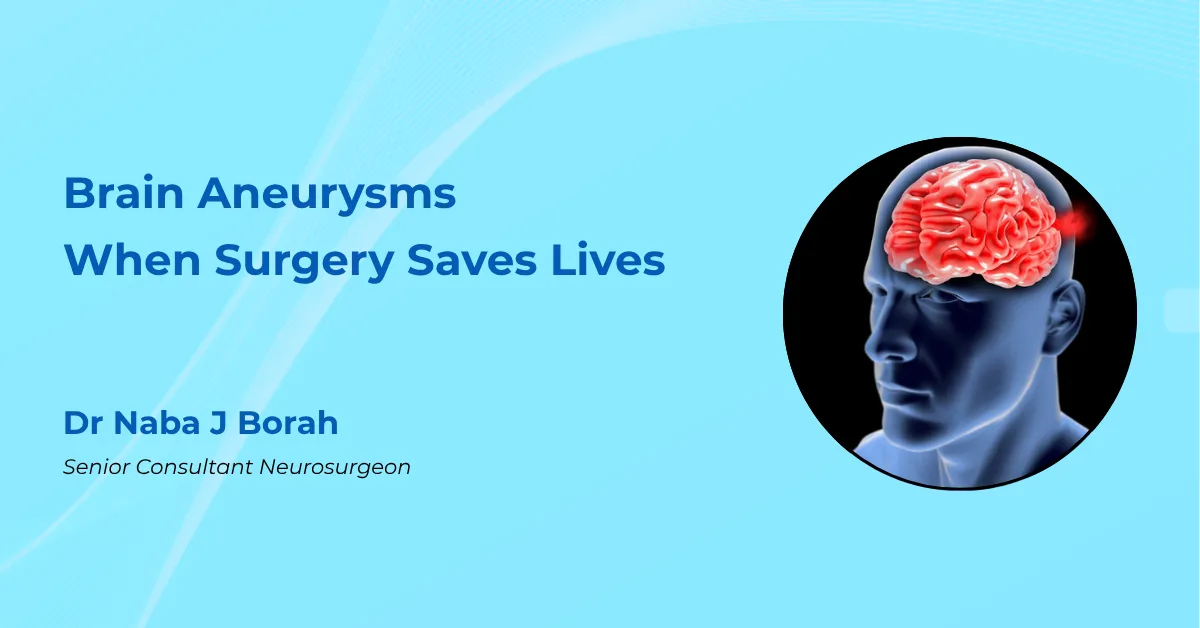
A brain aneurysm is a silent threat. Many people live their lives unaware of a bulging blood vessel in their brain — until it ruptures and causes a life-threatening emergency. In this article, we explore what brain aneurysms are, how they’re diagnosed, and when surgery becomes a critical option.
What is a Brain Aneurysm?
A brain aneurysm, also known as a cerebral aneurysm, is a weak or thin spot in a brain artery that balloons or bulges outward. Over time, the pressure of blood flow can cause the aneurysm to rupture, leading to bleeding in the brain, or what’s medically called a subarachnoid hemorrhage.
Most aneurysms develop in the arteries at the base of the brain. While small, unruptured aneurysms may never cause problems, large or ruptured aneurysms are considered medical emergencies and require immediate attention.
Symptoms: Silent Until It’s Not
Many brain aneurysms are asymptomatic. However, if the aneurysm presses on nearby nerves or leaks, you might experience:
- Sudden and severe headache (often described as “the worst headache of my life”)
- Blurred or double vision
- Pain above or behind the eye
- Drooping eyelid
- Loss of consciousness (in the case of rupture)
If you or someone you know is experiencing these symptoms, especially a sudden and intense headache, seek emergency medical care immediately.
Diagnosing a Brain Aneurysm
Doctors often detect brain aneurysms using imaging techniques such as:
- CT Scan: Especially useful during a suspected rupture to detect bleeding.
- MRI or MRA: Offers detailed images of brain blood vessels.
- Cerebral Angiogram: An invasive but accurate method of viewing the arteries in the brain.
Sometimes, aneurysms are found incidentally during imaging for unrelated symptoms.
When Surgery Becomes Necessary
Not all brain aneurysms require surgery. The decision is based on the aneurysm’s size, location, risk of rupture, and the patient’s overall health. However, if an aneurysm has ruptured or poses a high risk, surgical intervention is often necessary.
Two Common Surgical Options:
- Microsurgical Clipping: A neurosurgeon performs a craniotomy to place a metal clip across the neck of the aneurysm to stop blood flow.
- Endovascular Coiling: A less invasive method where coils are inserted via a catheter through the groin and into the aneurysm to induce clotting.
Mayo Clinic offers detailed comparisons of these procedures and their risks.
Risks and Recovery
All surgical procedures carry risks. Potential complications include:
- Bleeding or infection
- Stroke or neurological deficits
- Memory or speech problems (depending on aneurysm location)
Recovery time varies. Patients undergoing endovascular coiling typically recover faster than those who have open surgery. Post-operative care often includes physical therapy and regular follow-up imaging.
Living with a Brain Aneurysm
If an unruptured aneurysm is being monitored without surgery, lifestyle modifications are essential:
- Control high blood pressure
- Avoid smoking and alcohol
- Maintain a healthy diet
- Manage stress
According to the National Institute of Neurological Disorders and Stroke (NINDS), regular monitoring through imaging is crucial for high-risk patients.
Preventive Screening and Awareness
Individuals with a family history of aneurysms or conditions like polycystic kidney disease are at higher risk. Preventive screening and early detection can save lives. Ask your doctor if you’re a candidate for non-invasive imaging.
Final Thoughts
A brain aneurysm may be a ticking time bomb — but with the right diagnosis and timely surgical intervention, outcomes can be significantly improved. Awareness, preventive care, and access to skilled neurosurgeons are key.
Looking to learn more about neurosurgical conditions? You might be interested in our article on Chiari Malformation and Surgical Options.
If you’re planning your first consultation, read our guide on what to expect during your first neurosurgeon visit.
Contact Information
Dr. Naba J. Borah
Neurosurgeon, Health City Hospital, Guwahati
📞 Phone: +91-9864516798
💬 WhatsApp: +91-8404061190
🌐 Website: drnabajborah.com/contact-us
Disclaimer: For serious or life-threatening conditions, please visit your nearest emergency center immediately.
